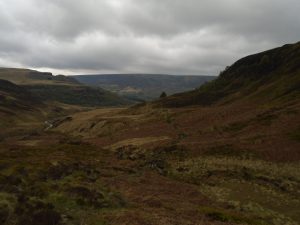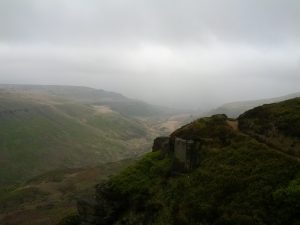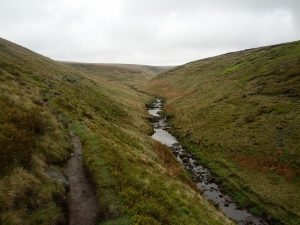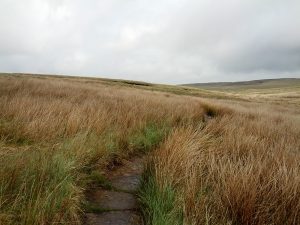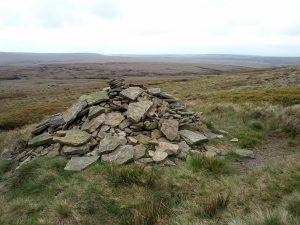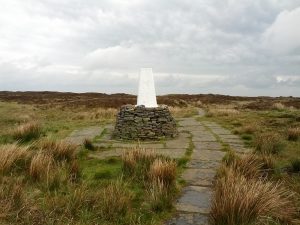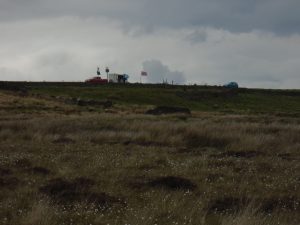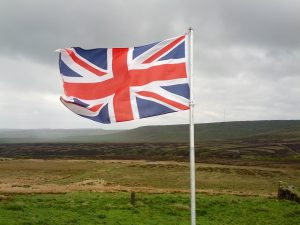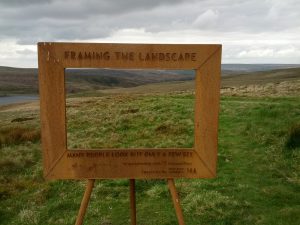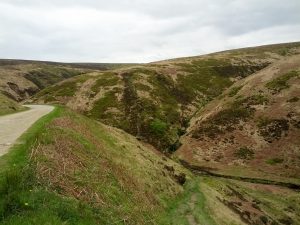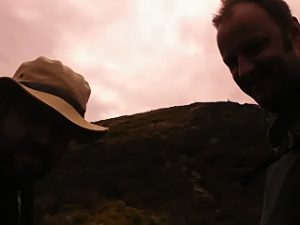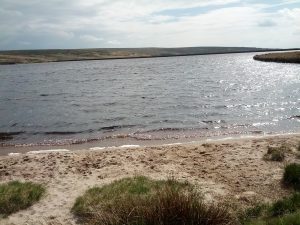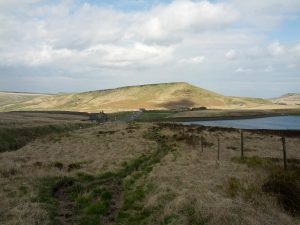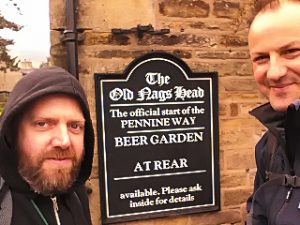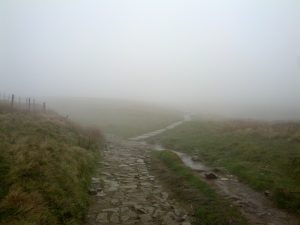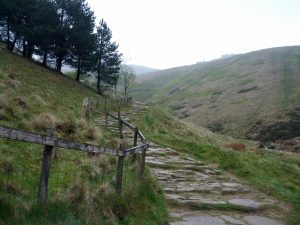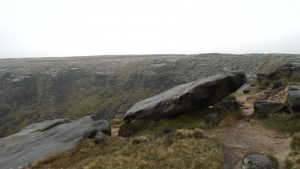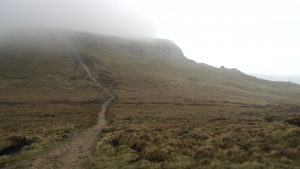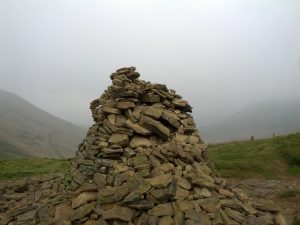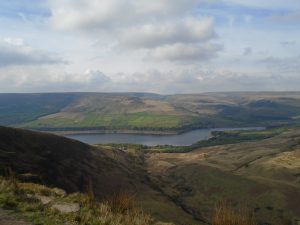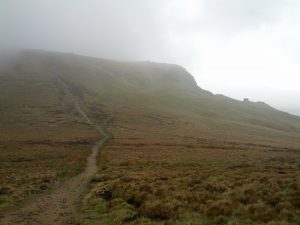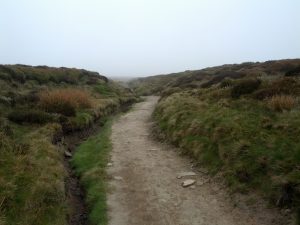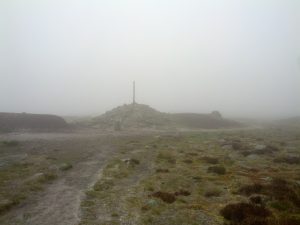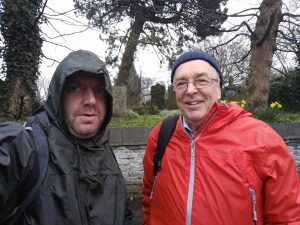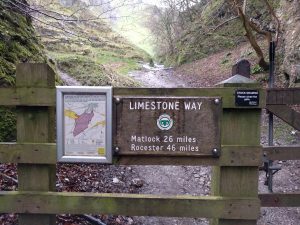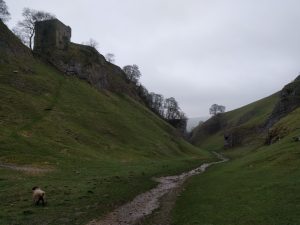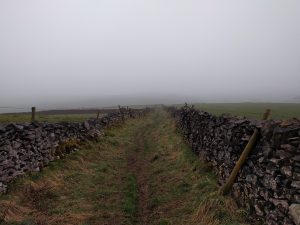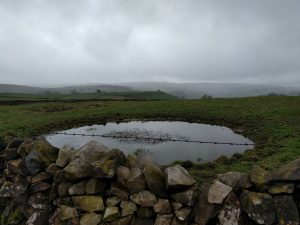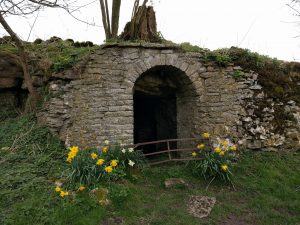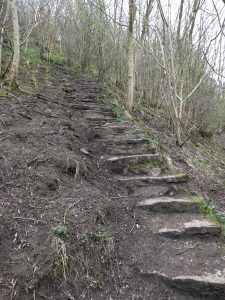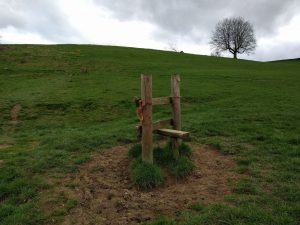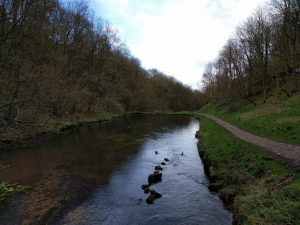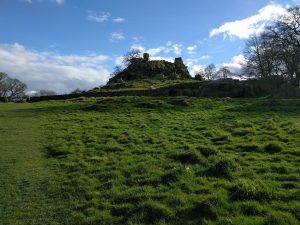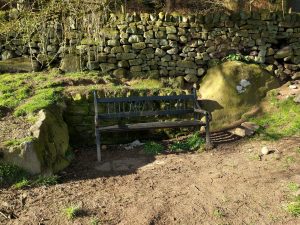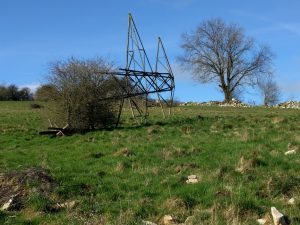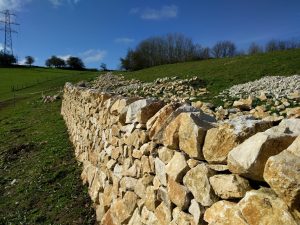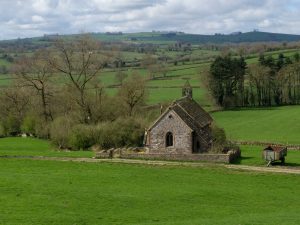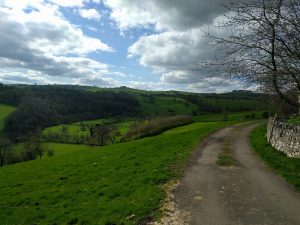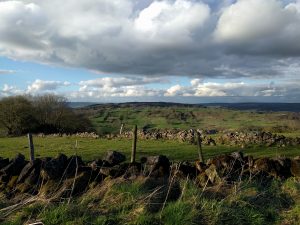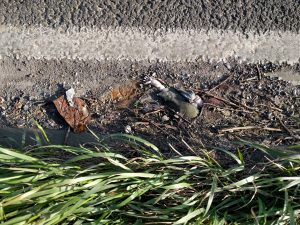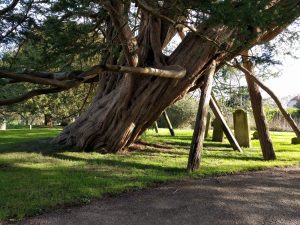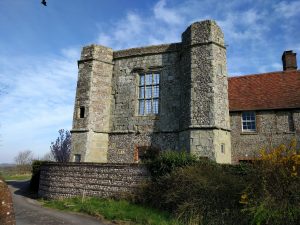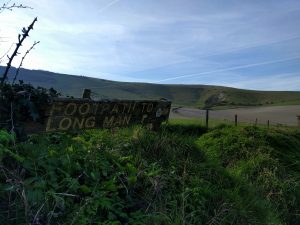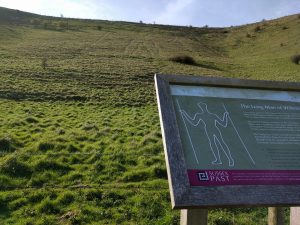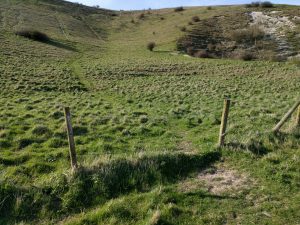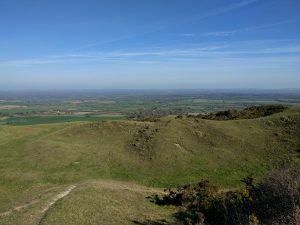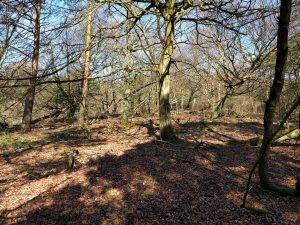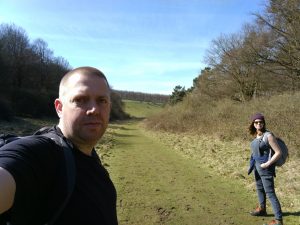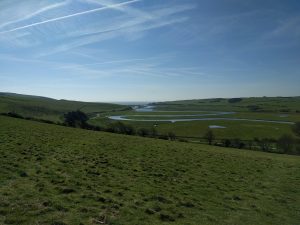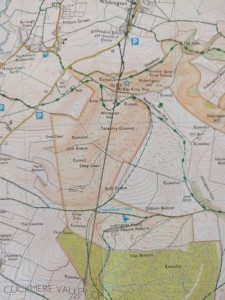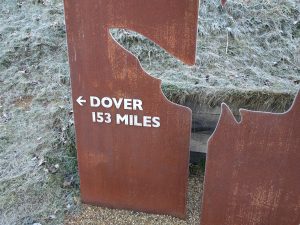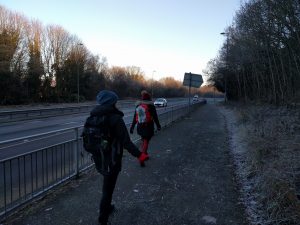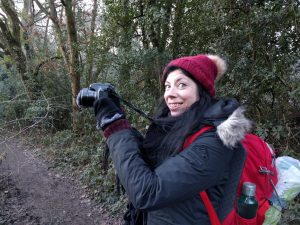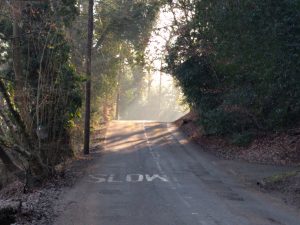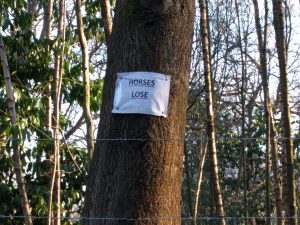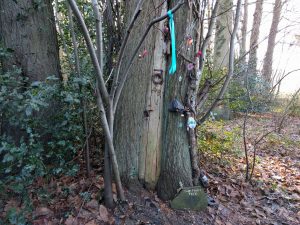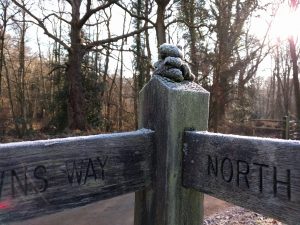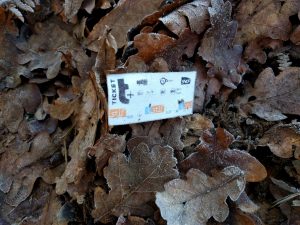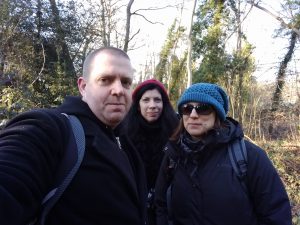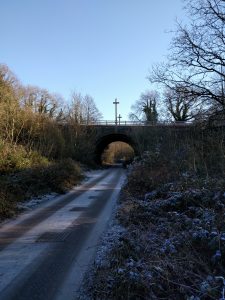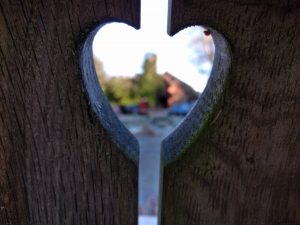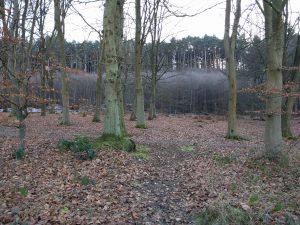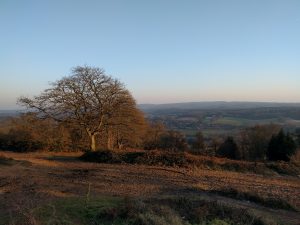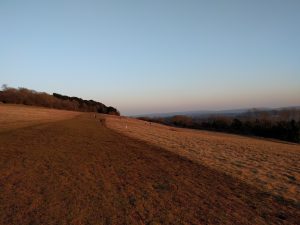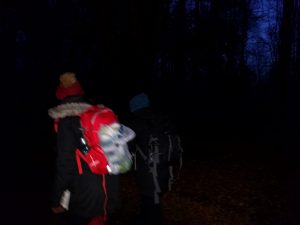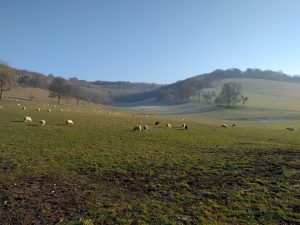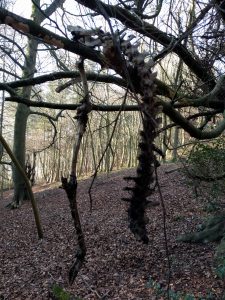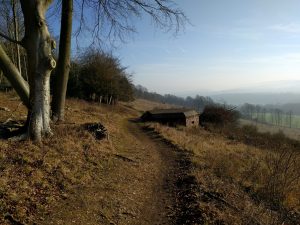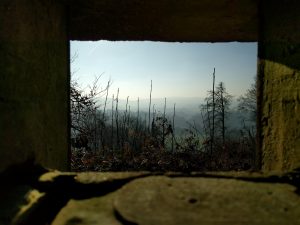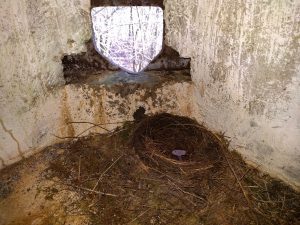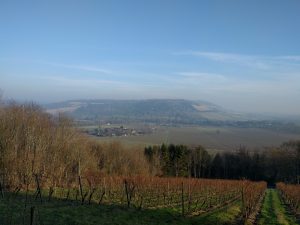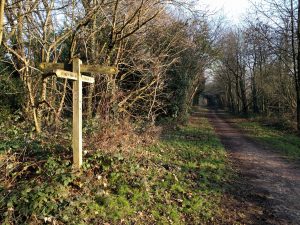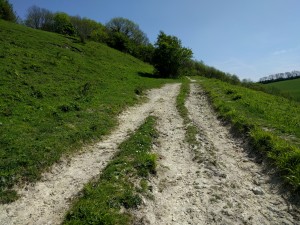1 – Day two of the Pennine Way began with a 300 meter climb spread out over two miles in an incredible valley before following Crowden Great Brook towards Black Hill.
2 – The day’s walk was just eleven miles, but the many climbs on top of the previous day’s strain meant it took quite a toll. I thought I was used to hiking, but this wore me out.
3 – We were very lucky with the weather. It was drizzly and windy, but not too unpleasant. Some of the paths ran very close to the edge of tall drops – in windier weather I could imagine this being quite dangerous. But a quick google turns up few reports of people who’ve been hurt on this trail.
4 – Having done several national trails now, one of the things that fascinates me is that each path has its own language. Or maybe its own voice. The South Downs Way could probably be followed without a map, since there are so many way markers and other walkers. The Limestone Way was incredibly difficult to follow, with the markers disappearing completely once I entered Staffordshire. The Pennine way is an interesting mix of obvious paths and places that rely on the map. When you reach a paved section in the middle of wilderness, it feels like the return of an old friend. Sometimes the path seems tiny, only the barest thread to lead you forward.
5 – On this stage, Emley Moor Mast became visible in the distance. A huge concrete structure, its twice the height of Brighton’s i360.
6 – Just before two we reached the A635 where we found Snoopy’s Snack Van. We ordered cups of tea and sat on plastic chairs out of the wind, chatting with a couple of other hikers. I tried one of the egg sandwiches, but the cooking facilities weren’t veggie friendly. I couldn’t finish the food, but the tea tasted amazing.
7 – One of my favourite things about the Pennine Way is the communication. I’d read about this in Emily’s account of the Coast-to-Coast path. It doesn’t happen so much on the South Downs Way, since the density of walkers is less and people are less chatty. On the Pennine Way people were more up for a chat. That day, a man was walking the route from Edale to Hebden Bridge in a single day, having set off at 4am. Somewhere in the distance was a woman who’d come from Melbourne Australia to walk the trail. I guess some of the people in our wake would have been told about us.
8 – We found a frame looking out on a view, which reminded me of Claude Glasses, used as a means of viewing landscapes in the 18th century. The idea was you looked through them and found a perfect image, like a painting. The Framing the Landscape project is by Ashley Jackson.
9 – On this stage and the following day, we passed a series of reservoirs. Near the snack wagon had stood a couple of gateposts, all that remained of the Isle of Skye hotel. It was demolished when the reservoirs were made, because it was thought it would pollute the water supply.
10 – The Carriage House was a great place to stay – comfortable and relaxed. And it had a bath! We ate an early supper then went to our rooms and fell asleep. The Pennine Way had worn us out.
